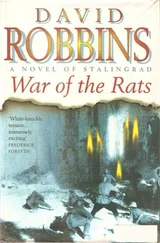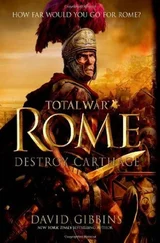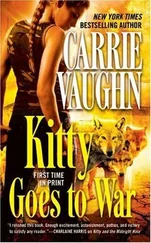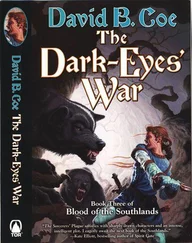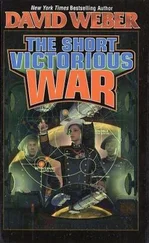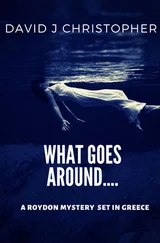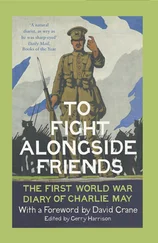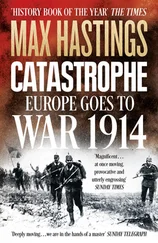Some game theorists even go so far as to say that we are biologically hardwired to be irrational—say, to want vengeance even when by hurting others we will only suffer further ourselves. It is possible that we have evolved to be partially vengeful; if my enemies know I will come after them, even at considerable cost to myself, they are less likely to inflict harm on me in the first place. The evolutionary drawback of such hardwiring is that once violence begins between individuals, factions, or nations, it becomes tough to stop, as evidenced by the generations of warring families in Sicily wiped out by the vendetta.
James Dean, in his 1955 classic, Rebel Without a Cause, made famous the deadly game of “chicken.” In one variant of this suicidal game, two drivers hurtle toward each other from a distance of several hundred meters. The first driver to swerve away from the line of contact is “chicken” and the loser. If neither swerves, there will be a devastating collision. Now, as the driver of one of those cars, if you can convince the other driver that you are not worried about the consequences of a crash or want death, then the battle is half won. When your opponents realize that you have no fear, that victory (or not being defeated) is all that matters to you, that you do not value your life, then they will see no point in trying to test your courage. One game theorist, Herman Kahn, wrote, “The ‘skilful’ player may get into the car quite drunk, throwing whisky bottles out the window to make it clear to everybody just how drunk he is. He wears very dark glasses so that it is obvious he cannot see much, if anything. As soon as the car reaches high speed, he takes the steering wheel and throws it out of the window.”
Bertrand Russell said that “chicken” was played by two groups: juvenile delinquents and nations. During the Fischer-Spassky match, the preeminent concern of the U.S. administration was the conflict in Vietnam and how to end it. Earlier, in 1969, President Richard Nixon had explained his madman policy to his chief of staff, H. R. Haldeman, as they strolled along a beach in Florida. As Haldeman recounted it, “He [Nixon] said, ‘I call it the madman theory, Bob. I want the North Vietnamese to believe I’ve reached the point where I might do anything to stop the war. We’ll just slip the word to them that “For God’s sake, you know Nixon is obsessed about communism. We can’t restrain him when he’s angry, and he has his hand on the nuclear button,” and Ho Chi Minh himself will be in Paris in two days, begging for peace.’” When Nixon ordered the bombing of Cambodia with B-52s, the intention, in part, was to signal to the North Vietnamese the potential deployment of the bombers in a nuclear role.
Henry Kissinger, Nixon’s national security adviser, had also reflected on the madman theory. In 1959, he had attended two lectures given by Daniel Ellsberg titled The Political Uses of Madness, in which Ellsberg had explored the diplomatic value of extreme threats by an apparently reckless leader. He instanced Hitler’s bloodless invasions of the Rhineland, Austria, and Czechoslovakia. One of Ellsberg’s conditions for success in the political application of madness was that the demands should be limited in scale and the threat so extreme that the mere possibility of its being carried out would be enough to persuade a foe to yield.
Fischer could no doubt have won the world championship “chicken” contest—he always appeared ready to crash his career. When he stated his all-or-nothing terms for his participation in a match or tournament, it was transparent to those who met him both that he imbued each of his conditions with immense significance, and that his threats were totally credible. He had a record of inflicting financial and career damage on himself on failing to win concessions: when organizers turned down his demands, he had refused to play in tournaments, even withdrawn midtournament. With his all-or-nothing threats, he was not taking up a negotiating position. The threat was not a tactic; he meant what he said. Even as an adult player, Fischer was seen—by officials and friends alike—as an adolescent, capable of viewing everything as a zero-sum game. At the Palma Interzonal in 1970, the distinguished British chess official Harry Golombek asked a rhetorical question: “How had the organizers achieved the minor miracle of getting Fischer to play through the entire tournament?” He himself supplied the answer: “By acceding to all Fischer’s demands.”
Playing “chicken” when you have no intention of swerving may be a way of repeatedly winning the game, but it is a perilous path. For eventually such a contestant will come up against an opponent unaware of his reputation, or who believes his reputation for recklessness is inflated, or who thinks he has been having things his own way for too long and is prepared to tough it out, or who himself takes a similarly cavalier attitude to death. During one of Fischer’s tournaments, an official implicitly recognized the danger. “Sure, Bobby’s a genius. But what happens if we have three or four geniuses with their own phobias and demands?” Sousse—as we have seen—was an instance of Fischer pushing his demands too far.
In his description of the inebriated “chicken” driver who chucks out the steering wheel, Herman Kahn put the hazards of playing “chicken” another way. “If his opponent is watching, he has won. If his opponent is not watching, he has a problem.”
Happily for Fischer, his negotiating partners had been watching every step of his career. Several times he took his match against Spassky to the brink of destruction. He provoked not just the Soviets, but the Icelanders and FIDE to the very limit of their tolerance. Almost each time they caved in.
With his “madness” established and his demands, if not reasonable, then at least, with considerable effort, manageable, Fischer proved at Reykjavik to be a hugely effective player of “chicken” as well as of chess. A condition for success was that the threat should be extreme—and for the Icelanders, Fischer’s threat to walk out was precisely that.
15. A LOVE-HATE RELATIONSHIP
What have you found in Iceland? What have we found? More copy….
— W. H. AUDEN AND LOUIS MACNEICE,
LETTERS FROM ICELAND
 Fischer could have faced tougher “chicken” opposition if the match had been held in a major city, Belgrade, Amsterdam, Paris, Moscow, New York. Another chess federation might not have felt obliged to concede ground. During the contest, practically the entire Icelandic population had to be mobilized—the police, the hoteliers, the restaurateurs, home owners with a room to spare, technicians, the print media. The Icelandic papers gave up most of their front pages to the chess match (splitting broadly along ideological lines: of the dailies, the conservative favored Fischer, the center and left of center tried for balance, and the radical left backed Spassky). Conversation among the Icelandic public was dominated by chess. On park benches, in cafés, locals and tourists could be seen bent over their pocket sets. The shop windows displayed posters of the two contestants. There were decorations around town in the shape of chess pieces. On sale were memorabilia of all kinds, including postcards containing the final position of each game.
Fischer could have faced tougher “chicken” opposition if the match had been held in a major city, Belgrade, Amsterdam, Paris, Moscow, New York. Another chess federation might not have felt obliged to concede ground. During the contest, practically the entire Icelandic population had to be mobilized—the police, the hoteliers, the restaurateurs, home owners with a room to spare, technicians, the print media. The Icelandic papers gave up most of their front pages to the chess match (splitting broadly along ideological lines: of the dailies, the conservative favored Fischer, the center and left of center tried for balance, and the radical left backed Spassky). Conversation among the Icelandic public was dominated by chess. On park benches, in cafés, locals and tourists could be seen bent over their pocket sets. The shop windows displayed posters of the two contestants. There were decorations around town in the shape of chess pieces. On sale were memorabilia of all kinds, including postcards containing the final position of each game.
At one time or another in that July and August, more than 15 percent of the world’s grandmasters came to Reykjavik. As well as the three grandmasters among the Soviet and U.S. teams and the German arbiter, Schmid, eight other grandmasters were present, reporting, or simply watching the match—Olafsson, Najdorf, Larsen, Byrne, Evans, Gligoric, Dragoljub Janosevic, and Lubomir Kavalek.
Читать дальше
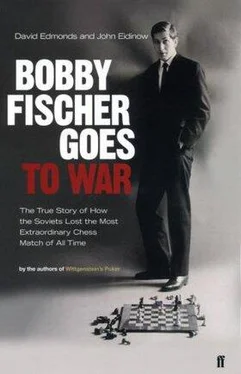
 Fischer could have faced tougher “chicken” opposition if the match had been held in a major city, Belgrade, Amsterdam, Paris, Moscow, New York. Another chess federation might not have felt obliged to concede ground. During the contest, practically the entire Icelandic population had to be mobilized—the police, the hoteliers, the restaurateurs, home owners with a room to spare, technicians, the print media. The Icelandic papers gave up most of their front pages to the chess match (splitting broadly along ideological lines: of the dailies, the conservative favored Fischer, the center and left of center tried for balance, and the radical left backed Spassky). Conversation among the Icelandic public was dominated by chess. On park benches, in cafés, locals and tourists could be seen bent over their pocket sets. The shop windows displayed posters of the two contestants. There were decorations around town in the shape of chess pieces. On sale were memorabilia of all kinds, including postcards containing the final position of each game.
Fischer could have faced tougher “chicken” opposition if the match had been held in a major city, Belgrade, Amsterdam, Paris, Moscow, New York. Another chess federation might not have felt obliged to concede ground. During the contest, practically the entire Icelandic population had to be mobilized—the police, the hoteliers, the restaurateurs, home owners with a room to spare, technicians, the print media. The Icelandic papers gave up most of their front pages to the chess match (splitting broadly along ideological lines: of the dailies, the conservative favored Fischer, the center and left of center tried for balance, and the radical left backed Spassky). Conversation among the Icelandic public was dominated by chess. On park benches, in cafés, locals and tourists could be seen bent over their pocket sets. The shop windows displayed posters of the two contestants. There were decorations around town in the shape of chess pieces. On sale were memorabilia of all kinds, including postcards containing the final position of each game.